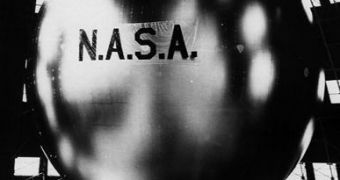The ancestor of all satellites that make nowadays instantaneous communication possible was a giant space balloon launched 50 years ago.
Its name was Echo 1, and it was the first communications satellite capable of relaying signals to other points on Earth.
The giant metallic balloon 100 feet (30 meters) across was launched August 12, 1960 and it rose 1,609 km above Earth, laying the foundation for today's satellite communications.
Former NASA chief historian Roger Launius, senior curator in the space division at the Smithsonian Air and Space Museum in Washington, DC, said to SPACE.com that “Instantaneous global telecommunications fundamentally altered our lives, and this was the beginning of it.”
The concept of a communications satellite is easy: data sent to space needs to be transmitted back down to another place on the planet.
Echo 1 did this because it was basically a huge mirror ten stories tall on which signals bounced off of.
It was made of a 2,918 square-meter sheet of Mylar plastic film of 12.7 microns thick, covered with 1.8 kg of reflective aluminum coating.
Along with inflating chemicals and 2 radio tracking beacons powered by 70 solar cells and five storage batteries, the total weight of the balloon was of 59.8 kg.
Echo 1 was not the first satellite to broadcast a message from space but it was the first one that allowed two-way live communications, like the first live voice communication via satellite of President Eisenhower.
Also, the first coast-to-coast telephone call through a satellite was made with Echo 1, from one researcher to another as a test, just like the first image transmitted via satellite - the portrait of Eisenhower.
In order to communicate with Echo 1, Bell labs created a 15-meter horn-shaped antenna, that captured cosmic microwave background radiation.
This turned out to be the first solid evidence of the Big Bang and it brought radio astronomers Arno Penzias and Robert Wilson the Nobel Prize.
This space balloon proved to be quite resistant after it survived a meteor shower, but in time was affected by sunlight that pushed it back into the Earth's atmosphere.
Today, Las Vegas-based company Bigelow Aerospace is working on private inflatable space habitats, that will allow it to launch the first private space station in 2014.

 14 DAY TRIAL //
14 DAY TRIAL //